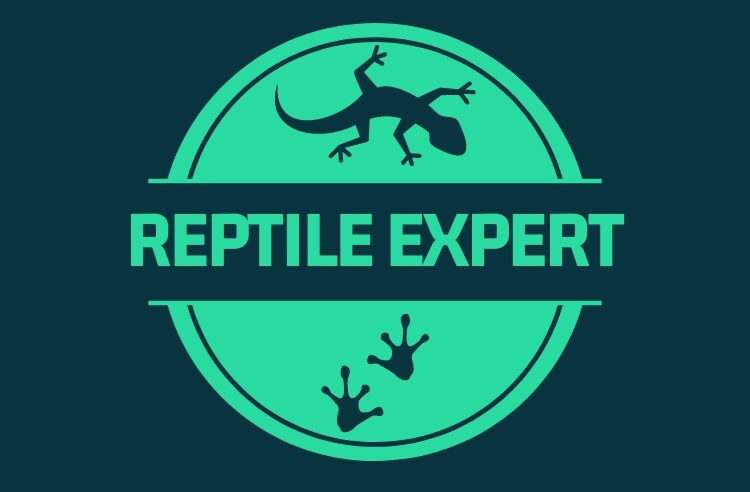Metabolic Bone Disease (MBD) is probably one of the most common illnesses that reptile owners will have to deal with. In a sense it is really an umbrella term for a number of disorders such as osteoporosis, fibrous osteodystrophy, secondary nutritional hyperparathyroidism, osteomalacia and rickets. All of these relate to a weakening of the bone or poor system function and are usually the result of an imbalance in vitamin D3, calcium and phosphorus.
Although popularly believed to be due to calcium deficiency in the diet, this is not the only cause of MBD. What can be said with certainty, however, is that the disease is almost always caused by poor husbandry and poor knowledge and provision of the correct environment and diet required by a particular reptile species. The disease is very commonly seen in iguanas due to their popularity as pets and their very specific diet, lighting and environment needs which are not always met by inexperienced keepers.
What Causes MBD?
Good reptile health depends on the proper ratio of calcium to phosphorous in the body (normally in the range of 1:1 to 2:1. However, if this ratio is out of balance and the calcium levels are too low, the body will compensate by extracting calcium from wherever it can – namely, the bones, leading to softening, fractures and the deposition of painful fibrous tissues as the body tries to strengthen the bone in other ways. In addition, calcium is also essential for many physiological systems such as muscle contraction and blood clotting so an imbalance in calcium leads to problems in all these areas, with fatal consequences in some cases (e.g. problems with heart muscle contractions).
Lack of calcium can be due to deficiencies in the diet but it can also be due to more complex reasons. Vitamin D is required in calcium metabolism so a deficiency in this vitamin can also affect calcium levels, even if the amount of calcium ingested via the diet is sufficient. In addition, inadequate protein in the diet can cause MBD, as well as kidney or liver disease, small intestinal disease and disease of the thyroid or parathyroid glands – as all these conditions disrupt or impair Vitamin D conversion into its active form and calcium metabolism. Even temperature can play a role as if the environment is too cool, proper digestion and therefore calcium absorption can be impaired. Overall, however, the main causes of MBD tend to be nutritional imbalances.
Symptoms and Treatment of MBD
Symptoms can vary, depending on how severe the disease and how long it has been developing. They usually involve the bone and muscle as calcium plays such an essential role in bone formation and muscle function. Usually recognition of the symptoms together with a veterinary examination and discussion of husbandry will confirm the disease although definitive diagnoses can be made with X-rays. Treatment is usually possible and with mild cases, simple modification of diet and husbandry techniques may be enough to restore health – in severe cases, however, veterinary intervention in the form of intensive calcium and vitamin supplementation may be required.
The symptoms to watch out for are:
- bowed or swollen legs
- lumps on the long bones of the legs or on bones of the spine
- arched spine
- “rubber jaw” – softening and swelling of the jaw, or receded lower jaw
- fractures of the bones due to bone weakness
- tremors or jerky movements and twitching in the muscles of the legs and toes
- lameness
- anorexia
- constipation
- lethargy
- weakness and even partial paralysis, such as being unable to lift body off the ground
- (in turtles) softening of the carapace or plastron, i.e. the shell
How to Prevent MBD
As this is a disease that is easily preventable with good nutrition and husbandry, it is well worth the effort to gain the proper knowledge and thus provide the correct care needed to maintain your reptile’s health. Always make sure that you thoroughly research your chosen reptile species and consult experienced reptile experts and knowledgeable veterinarians for advice, ideally before you bring your new pet home. Do not just rely on the superficial advice given in pet stores – this is often inadequate, incomplete or worse, downright incorrect.
As nutrition plays such a crucial role, it is vital that you provide a diet with the correct levels of calcium, phosphorus, protein, energy and other nutrients. Note, however, that the essential elements must be offered in a bio-available form. For example, spinach, collards, carrots, chards and other thick leafy green vegetables– although famous for their high calcium content, also contain oxalates that bind calcium and make it difficult to access. Thus, a lot of dietary calcium is actually unavailable for maintenance and growth, in small quantities. This is why, in addition to feeding calcium-rich, nutrient-dense foods, it is a good idea to regularly supplement with additional calcium and multivitamin formulated for reptiles.
In addition to providing a balanced diet, it is also important to take other things into consideration. Because reptiles cannot absorb Vitamin D well, they need to manufacture their own through exposure to ultraviolet light. Thus, providing specialised fluorescent bulbs that provide the correct UVA and UVB rays is essential. Also make sure that the thermal gradient and ambient temperature is sufficient for good digestion. Furthermore, you must ensure that your reptile is provided with proper light/dark cycles and that it also has ample room in the enclosure to exercise.
